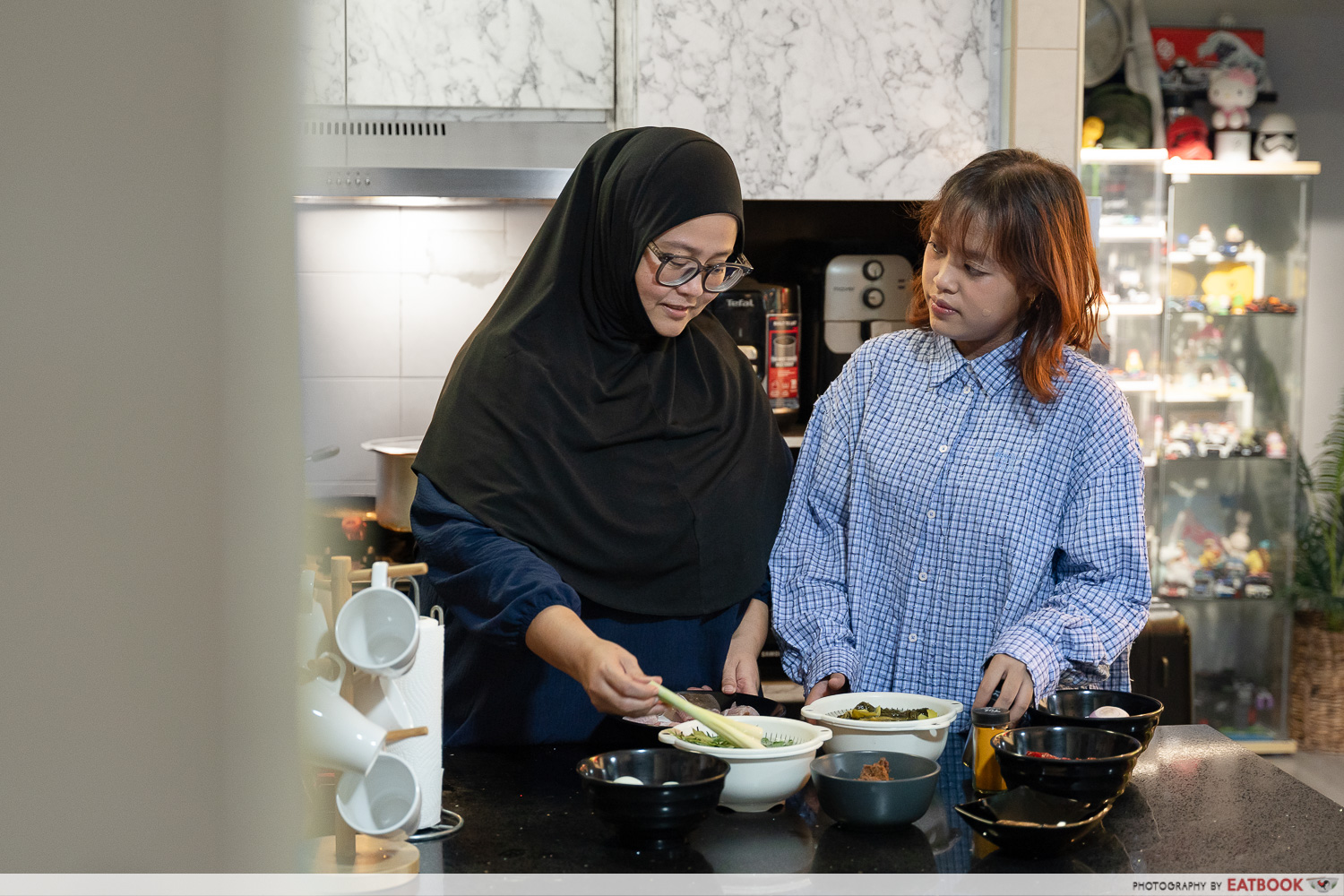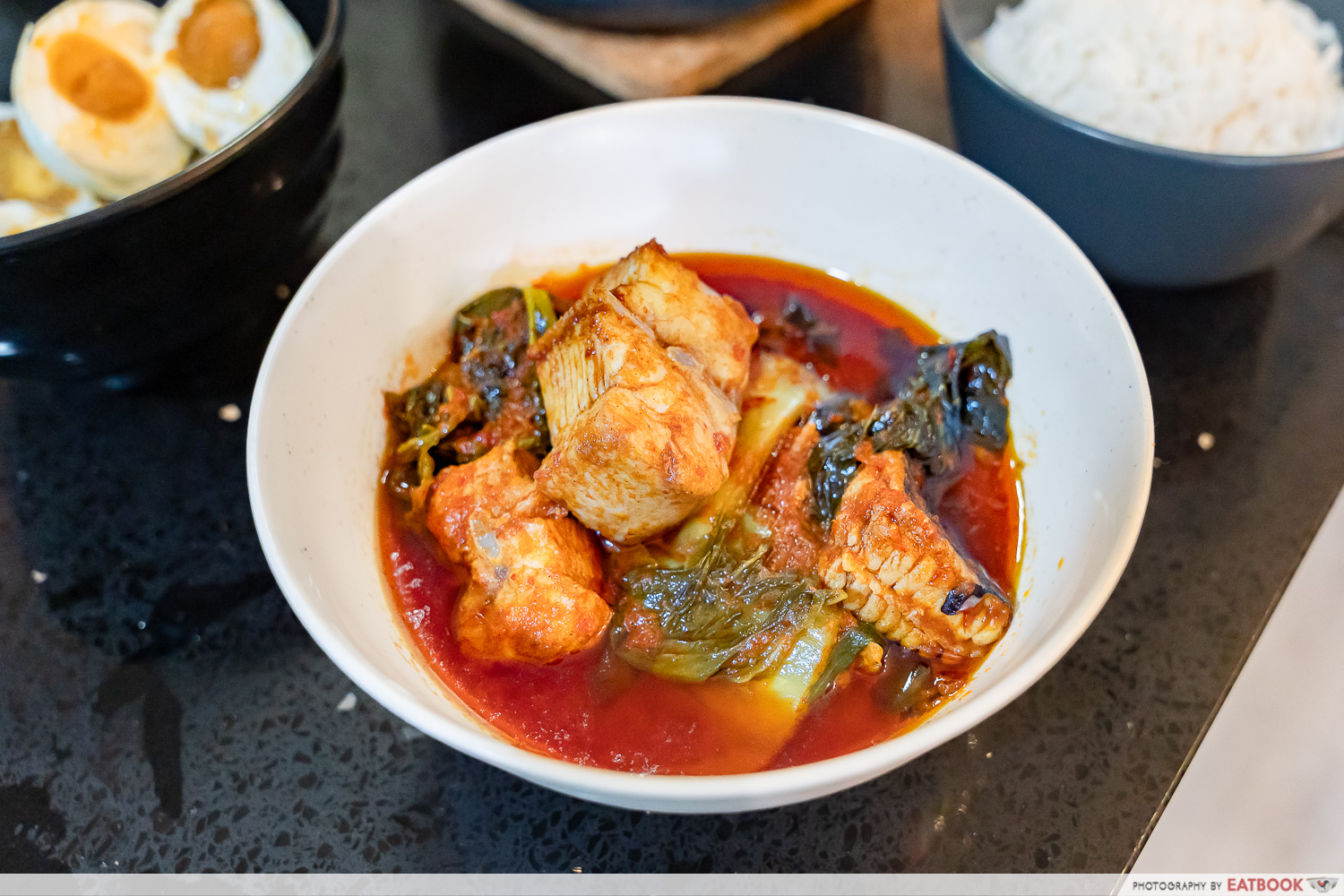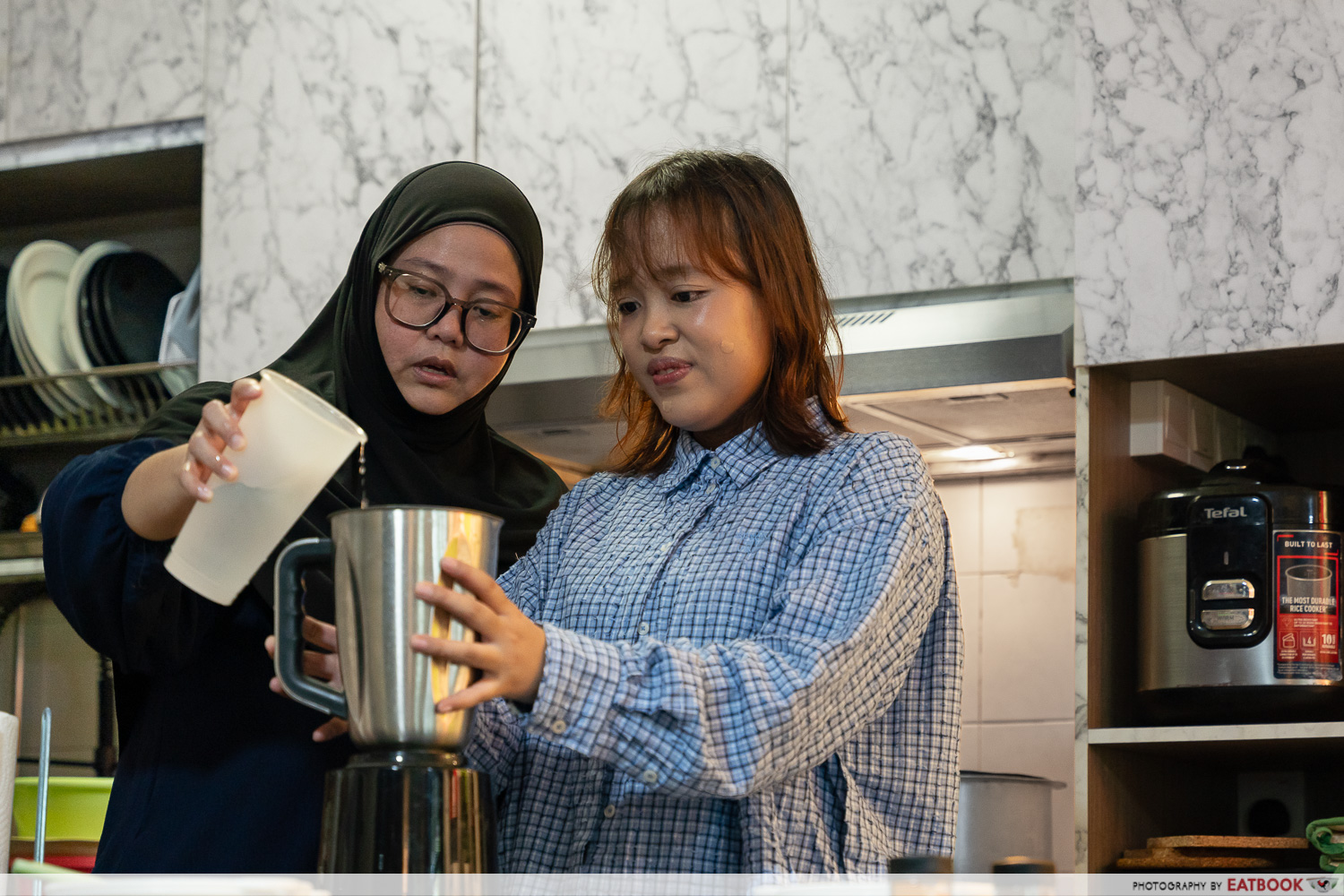My aunt’s asam pedas ikan pari recipe

There are two women in my life whom I affectionately call “Ma”. The first is my mother (duh), and the second is my aunt, Cik Ayumi. My mother gets quite jealous about this, so I’ll start by saying: sorry, Ma, this article is dedicated to my other Ma.

Though she has three kids of her own, who are all around my age, Ma has always treated me like one of her own. Many weekends of my youth were spent sleeping over at Ma’s house, playing rowdy games with the cousins till she chided us to go to bed. But no matter how we behaved, Ma would always make us amazing meals. And one of her best was, and still is, asam pedas ikan pari, a sour-spicy stingray dish.

I was 10 when I first tried Ma’s asam pedas. As I was then alien to the world of spicy foods, the dish’s reddish hue struck fear into my prepubescent soul. But since all my cousins were happily tucking in—they’ve always had high spice tolerance—I decided I couldn’t lose out.

As you’d expect, the first thing that hit me was the spice, which was at once searing and prickly. But that initial pain soon gave way to a flavour profile that was far more complex than anything I had tried before: an intoxicating mix of spicy and sour, with the ever-so-subtle sweetness of stingray, its texture firm yet tender. I loved it so much that I even began soaking up the gravy with bread, just to get every drop of those flavours into my system.

Even as an adult, I tend to shy away from spicy foods. But asam pedas ikan pari, with its rich blend of dried chilli, tamarind paste, lemongrass, stingray and more, is one spicy dish I’m willing to sweat through. Ma knows this, of course, and it’s become a tactic to have me visit her. Come over to my house lah, she’d say, I cook asam pedas for you. Even though we live on opposite sides of the island, I’m usually happy to oblige.

Ma’s feisty personality means our conversations are often full of bickering and bantering. To an outsider, it can sometimes sound like she is unusually harsh on me. But we all know actions speak louder than words, and Ma’s actions, such as her eagerness to cook for me, are surely expressions of her love.

I’d like to think this asam pedas recipe is at least a century old—my grandmother taught it to Ma when she was a young woman, and who knows who taught it to my grandmother? As you can tell from the pictures in this article, it seems I am next in line to receive this knowledge. That’s a heavy burden for someone as hopeless in the kitchen as I am, but I’d love to one day impress Ma with this dish, just as I was when she first made asam pedas for me all those years ago.
If you’d like to try your hand at this dish, here’s the recipe.

My Aunt’s Asam Pedas Ikan Pari
Equipment
- Blender
- Medium-sized pot
- Knife and chopping board
- Large bowl or basin
Ingredients
Ingredients for spice paste
- 1-3 handfuls dried chillies seeds removed, adjust to spice preference
- 2 medium onions quartered
- 4 cloves garlic peeled
- 1 tsp turmeric powder
- 1 tsp belacan (shrimp paste)
- ½ cup water
Ingredients for fish and soup base
- 500g stingray
- 5 tbsp tamarind paste
- 2 cups water
- salt to taste
- 3 tbsp oil
- 1 stalk lemongrass bruised
Additional ingredients
- laksa leaves to taste
- pickled mustard greens to taste
- Salt and pepper to taste
Instructions
- Soak the dried chillies in hot water until softened for easier blending.
- In a blender, combine softened chillies, onions, garlic, shrimp paste, and ½ cup of water. Blend until smooth.
- In a basin, marinate the stingray with 2 tbsp of tamarind paste to remove any fishy odour. Set aside for 10 minutes.
- Prepare tamarind water by mixing 3 tbsp tamarind paste with 2 cups of water.
- Heat 5 tbsp oil in a pot over medium heat. Pour in the blended spice paste and stir constantly to prevent burning. Fry until the paste becomes aromatic, then add the bruised lemongrass stalk. Lower the heat if necessary.
- Once the oil rises to the surface, pour in 2 cups of water and the prepared tamarind water.
- Bring the mixture to a boil and allow it to reduce slightly.
- Add the stingray and cover the pot.
- Add laksa leaves and pickled mustard greens to your liking. Season with salt and pepper to taste.
- Simmer until the stingray is fully cooked and the soup is rich in flavour.
For a similar story centred on a ngoh hiang recipe, read this ah ma’s ngoh hiang feature. For a story about the last survivor of Singapore’s historical Satay Club, read our Original Alhambra Satay feature.
I’ve Always Loved My Ah Ma’s Ngoh Hiang—It’s Time I Learned It From Her
Photos taken by Enze Kay and edited by Nabila Malek.
This article was based on an interview with Nabila Malek.

Drop us your email so you won't miss the latest news.

